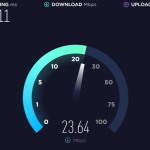
There is no doubt that internet has become an integral part of business, education and communication. However, it can be quite challenging for people living in rural communities to access reliable internet connectivity.
In spite of these difficulties, there are some ways through which the connection can be improved in such areas. Some of them include public-private partnerships and finding methods of providing high-speed broadband internet in the countryside.
Economic Disparities
Over the years, the gap between rich and poor has been widening. This has left many rural communities with low rates of home ownerships, educational achievements as well as weak local economies. In addition to this is their lack of access to fast speed internet connections in remote areas thus limiting their ability to use distance health care services or seek employment elsewhere.
Use of Internet can greatly reduce income inequality among rural households particularly those that belong to farmers. Moreover, its e-commerce capabilities enable these farmers to earn more by expanding their businesses’ reach thereby increasing profits realized from such ventures.
Due to high costs associated with extending broadband service into countryside areas where returns are minimal, gaining entry into this technology poses a huge problem. Hence both private sector and government responses have been introduced so far towards closing this digital divide; one example being provision of subsidies by state agencies to needy families while at the same time fostering competition among suppliers operating within rural markets for lower charges.
Physical Barriers
Rural environment consists of various physical impediments that could disrupt Internet connectivity beyond what was anticipated hence making it harder than anyone expected keeping up with reliable Internet service. Hills can block radio waves; lakes and rivers may interfere with wireless signals; forests prevent line-of-sight transmission leading either dropped-out wireless signals or interfering power cables which need powering up & running properly through equipment.
Internet solutions for remote businesses need to be flexible enough so they can grow when necessary. Slow internet speeds cripple growth which eventually leads to loss in competitiveness.
Our KnowledgePanel survey revealed that most rural residents think their local governments should finance broadband internet access; however opinions on this subject may differ depending on one’s demography or income level. The desire for connectivity is highest among blacks and Hispanics whose views are more responsive to income suggesting that demand for reliable internet in rural areas is largely driven by economic factors, but communities have various options for increasing it.
Environmental Issues
US economic prosperity is not distributed equally across the country thereby leaving behind many hinterlands. High-speed Internet connection can contribute greatly towards supporting local economies as well as reducing the urban-rural divide.
Scalable internet solutions are needed by rural businesses which depend on web traffic to grow their operations even further while driving efficiencies within them; nevertheless, these small networks quickly become inadequate due to rising data demands thus impeding enterprise expansion.
To truly utilize online education content and economic opportunities, people living in the country need reliable internet; however, low availability of broadband is also a barrier to rural economic growth and worsens educational injustice. The digital divide can be eliminated through implementation of effective techniques which will also open up potential for rural economies to thrive. Nevertheless; before that happens we must first find out what blocks our path hence this article will focus on major challenges of improving internet connectivity in rural America during its initial phase which is part one out of four.
Accessibility
When someone has access to the internet from where they live, it means that they can shop for goods and services not found within their locality; advertise their own products or services; consult with doctors remotely thereby increasing chances of getting better treatment as well as staying updated about civic matters through local news sources among other things. They can also keep in touch with friends and family members apart from accessing educational materials designed to improve academic/professional qualifications while developing digital competencies necessary for participating in various online socialization platforms geared towards community development.
Rural areas still struggle to get connected by broadband although companies are doing everything possible supported by government intervention.
To take coverage deeper into countryside regions, businesses are likely going need help from state housing finance agencies so that affordable rental housing program rules are changed to include broadband being made mandatory in all units set aside for rentals targeted at persons who may not afford high-end accommodations. In addition, federal subsidies might be availed which would cater for building required infrastructure besides encouraging providers through incentives to avail such services.









